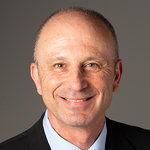
Pfizer Inc
NYSE:PFE


| US |

|
Johnson & Johnson
NYSE:JNJ
|
Pharmaceuticals
|
| US |

|
Berkshire Hathaway Inc
NYSE:BRK.A
|
Financial Services
|
| US |

|
Bank of America Corp
NYSE:BAC
|
Banking
|
| US |

|
Mastercard Inc
NYSE:MA
|
Technology
|
| US |

|
UnitedHealth Group Inc
NYSE:UNH
|
Health Care
|
| US |

|
Exxon Mobil Corp
NYSE:XOM
|
Energy
|
| US |

|
Pfizer Inc
NYSE:PFE
|
Pharmaceuticals
|
| US |

|
Palantir Technologies Inc
NYSE:PLTR
|
Technology
|
| US |

|
Nike Inc
NYSE:NKE
|
Textiles, Apparel & Luxury Goods
|
| US |

|
Visa Inc
NYSE:V
|
Technology
|
| CN |

|
Alibaba Group Holding Ltd
NYSE:BABA
|
Retail
|
| US |

|
3M Co
NYSE:MMM
|
Industrial Conglomerates
|
| US |

|
JPMorgan Chase & Co
NYSE:JPM
|
Banking
|
| US |

|
Coca-Cola Co
NYSE:KO
|
Beverages
|
| US |

|
Walmart Inc
NYSE:WMT
|
Retail
|
| US |

|
Verizon Communications Inc
NYSE:VZ
|
Telecommunication
|
Utilize notes to systematically review your investment decisions. By reflecting on past outcomes, you can discern effective strategies and identify those that underperformed. This continuous feedback loop enables you to adapt and refine your approach, optimizing for future success.
Each note serves as a learning point, offering insights into your decision-making processes. Over time, you'll accumulate a personalized database of knowledge, enhancing your ability to make informed decisions quickly and effectively.
With a comprehensive record of your investment history at your fingertips, you can compare current opportunities against past experiences. This not only bolsters your confidence but also ensures that each decision is grounded in a well-documented rationale.
Do you really want to delete this note?
This action cannot be undone.

| 52 Week Range |
24.5384
31.39
|
| Price Target |
|
We'll email you a reminder when the closing price reaches USD.
Choose the stock you wish to monitor with a price alert.

|
Johnson & Johnson
NYSE:JNJ
|
US |

|
Berkshire Hathaway Inc
NYSE:BRK.A
|
US |

|
Bank of America Corp
NYSE:BAC
|
US |

|
Mastercard Inc
NYSE:MA
|
US |

|
UnitedHealth Group Inc
NYSE:UNH
|
US |

|
Exxon Mobil Corp
NYSE:XOM
|
US |

|
Pfizer Inc
NYSE:PFE
|
US |

|
Palantir Technologies Inc
NYSE:PLTR
|
US |

|
Nike Inc
NYSE:NKE
|
US |

|
Visa Inc
NYSE:V
|
US |

|
Alibaba Group Holding Ltd
NYSE:BABA
|
CN |

|
3M Co
NYSE:MMM
|
US |

|
JPMorgan Chase & Co
NYSE:JPM
|
US |

|
Coca-Cola Co
NYSE:KO
|
US |

|
Walmart Inc
NYSE:WMT
|
US |

|
Verizon Communications Inc
NYSE:VZ
|
US |
This alert will be permanently deleted.
 Pfizer Inc
Pfizer Inc
Pfizer Inc
Investor Relations
Pfizer Inc., a name synonymous with pharmaceutical innovation, embarked on its journey in 1849 when German immigrants Charles Pfizer and Charles Erhart founded the company in Brooklyn, New York. Over the decades, the modest chemical business transformed into a titan of the pharmaceutical industry, delivering breakthroughs that have shaped modern medicine. The company operates through its robust engine of research and development, continually investing billions into discovering and bringing to market medications that address unmet medical needs. Spanning therapeutic areas such as oncology, vaccines, rare diseases, and cardiovascular and metabolic health, Pfizer's strategic focus ensures a diverse product pipeline that aligns with global health trends and challenges.
The company's revenue model is predominantly driven by the development, marketing, and sale of its pharmaceutical products. Blockbuster drugs like Lipitor and recently, the COVID-19 vaccine developed in collaboration with BioNTech, have contributed significantly to its earnings. Pfizer's ability to maintain a strong balance between branded pharmaceuticals and generics allows it to effectively cater to both emerging markets and developed economies, while its strategic partnerships and acquisitions further bolster its reach and capabilities. The synergy of science and business acumen at Pfizer has made it not only a hub of medical innovation but also a formidable enterprise in the competitive landscape of healthcare.

Pfizer Inc., a name synonymous with pharmaceutical innovation, embarked on its journey in 1849 when German immigrants Charles Pfizer and Charles Erhart founded the company in Brooklyn, New York. Over the decades, the modest chemical business transformed into a titan of the pharmaceutical industry, delivering breakthroughs that have shaped modern medicine. The company operates through its robust engine of research and development, continually investing billions into discovering and bringing to market medications that address unmet medical needs. Spanning therapeutic areas such as oncology, vaccines, rare diseases, and cardiovascular and metabolic health, Pfizer's strategic focus ensures a diverse product pipeline that aligns with global health trends and challenges.
The company's revenue model is predominantly driven by the development, marketing, and sale of its pharmaceutical products. Blockbuster drugs like Lipitor and recently, the COVID-19 vaccine developed in collaboration with BioNTech, have contributed significantly to its earnings. Pfizer's ability to maintain a strong balance between branded pharmaceuticals and generics allows it to effectively cater to both emerging markets and developed economies, while its strategic partnerships and acquisitions further bolster its reach and capabilities. The synergy of science and business acumen at Pfizer has made it not only a hub of medical innovation but also a formidable enterprise in the competitive landscape of healthcare.
Earnings Calls
Management

David M. Denton is an accomplished finance executive who currently serves as the Chief Financial Officer (CFO) and Executive Vice President of Pfizer Inc. He joined Pfizer in 2022, bringing with him vast experience in finance and strategic leadership. Before joining Pfizer, Denton was the CFO at Lowe's Companies Inc., a prominent home improvement retailer. During his tenure at Lowe’s from 2018 to 2022, he played a pivotal role in driving financial performance and strategic initiatives. Prior to his role at Lowe's, Denton had an extensive career at CVS Health, where he served in several leadership positions, eventually becoming CFO. His time at CVS Health was marked by significant contributions to the company's financial strategies and operations, including involvement in major transactions that shaped the company’s portfolio and market presence. Denton is known for his strong strategic insight, operational focus, and commitment to delivering shareholder value. His financial expertise and leadership experience are integral to Pfizer as the company continues to innovate and grow in the pharmaceutical industry. He holds a Bachelor of Science in Business Administration with a major in Finance and a Master of Business Administration from the University of Georgia.

Prior to his role at Lowe's, Denton had an extensive career at CVS Health, where he served in several leadership positions, eventually becoming CFO. His time at CVS Health was marked by significant contributions to the company's financial strategies and operations, including involvement in major transactions that shaped the company’s portfolio and market presence.
Denton is known for his strong strategic insight, operational focus, and commitment to delivering shareholder value. His financial expertise and leadership experience are integral to Pfizer as the company continues to innovate and grow in the pharmaceutical industry. He holds a Bachelor of Science in Business Administration with a major in Finance and a Master of Business Administration from the University of Georgia.

Dr. Mikael Dolsten, M.D., Ph.D., is a prominent figure in the pharmaceutical industry, known for his leadership role at Pfizer Inc. as the Chief Scientific Officer and President of Worldwide Research, Development, and Medical. Dr. Dolsten has been instrumental in driving innovation and overseeing the development of numerous therapeutic initiatives across various fields, including oncology, immunology, and infectious diseases. Dr. Dolsten joined Pfizer in 2009, and since then, he has been key in shaping the company's R&D strategies. He played a critical role in Pfizer's response to the COVID-19 pandemic, particularly in the accelerated development and successful deployment of the Pfizer-BioNTech COVID-19 vaccine, which has become one of the most widely used vaccines globally. Before his tenure at Pfizer, Dr. Dolsten held senior positions at other leading pharmaceutical companies, such as Boehringer Ingelheim and Wyeth. His extensive experience spans drug discovery, clinical development, and the commercialization of pharmaceutical products. Dr. Dolsten earned his medical degree and Ph.D. from Lund University in Sweden, where he also conducted post-doctoral research. Throughout his career, he has been recognized for his contributions to medical research and development, and he continues to be a strong advocate for scientific excellence and innovation in medicine.

Dr. Dolsten joined Pfizer in 2009, and since then, he has been key in shaping the company's R&D strategies. He played a critical role in Pfizer's response to the COVID-19 pandemic, particularly in the accelerated development and successful deployment of the Pfizer-BioNTech COVID-19 vaccine, which has become one of the most widely used vaccines globally.
Before his tenure at Pfizer, Dr. Dolsten held senior positions at other leading pharmaceutical companies, such as Boehringer Ingelheim and Wyeth. His extensive experience spans drug discovery, clinical development, and the commercialization of pharmaceutical products.
Dr. Dolsten earned his medical degree and Ph.D. from Lund University in Sweden, where he also conducted post-doctoral research. Throughout his career, he has been recognized for his contributions to medical research and development, and he continues to be a strong advocate for scientific excellence and innovation in medicine.
Ms. Jennifer B. Damico is not widely recognized as a public figure within Pfizer Inc., and there is limited publicly available information about her in that context. Therefore, I cannot provide a detailed biography of her role or contributions to Pfizer. If she holds a position within the company, it's possible that her responsibilities and achievements have not been extensively covered in public forums. For accurate and updated information, you might consider consulting Pfizer's official communications or press releases.
Lidia L. Fonseca is the Executive Vice President, Chief Digital and Technology Officer at Pfizer Inc. In this role, she is responsible for Pfizer’s digital transformation and its focus on delivering a consistent end-to-end patient and customer experience. Fonseca leads the company’s efforts to harness the power of data and technology to accelerate the discovery and development of medicines and vaccines, enhance health outcomes, and improve patient engagement. With a strong background in digital innovation, Lidia has extensive experience in leading large-scale transformations and operations in healthcare and technology sectors. Before joining Pfizer in 2019, she served as the Chief Information Officer and Senior Vice President of Quest Diagnostics, where she was instrumental in driving the company’s data strategy and innovation in diagnostic information services. Fonseca holds a Bachelor of Arts in Economics from the University of California, Berkeley, and an MBA and a Master of Business Informatics from Rotterdam School of Management, Erasmus University. Her leadership is recognized for integrating cutting-edge technologies, including analytics, artificial intelligence, and machine learning, into business practices to enhance productivity, improve decision-making, and support strategic initiatives. She has been acknowledged for her work in the industry and has received numerous accolades for her contributions and leadership in technology and healthcare.
With a strong background in digital innovation, Lidia has extensive experience in leading large-scale transformations and operations in healthcare and technology sectors. Before joining Pfizer in 2019, she served as the Chief Information Officer and Senior Vice President of Quest Diagnostics, where she was instrumental in driving the company’s data strategy and innovation in diagnostic information services.
Fonseca holds a Bachelor of Arts in Economics from the University of California, Berkeley, and an MBA and a Master of Business Informatics from Rotterdam School of Management, Erasmus University. Her leadership is recognized for integrating cutting-edge technologies, including analytics, artificial intelligence, and machine learning, into business practices to enhance productivity, improve decision-making, and support strategic initiatives. She has been acknowledged for her work in the industry and has received numerous accolades for her contributions and leadership in technology and healthcare.
Ms. Francesca M. DeMartino is known for her role as Vice President of Investor Relations at Pfizer Inc. With a career dedicated to fostering transparent and effective communication between the corporation and its shareholders, DeMartino plays a crucial role in maintaining investor confidence and building strategic connections. She is responsible for ensuring that investors have a clear understanding of Pfizer's financial performance, strategic direction, and market position. Her expertise in finance and communications significantly aids Pfizer in effectively managing its investor relationships and enhancing its corporate reputation.
Rady A. Johnson is a prominent figure in the pharmaceutical industry, best known for his role at Pfizer Inc., where he serves as the Executive Vice President and Chief Compliance, Quality and Risk Officer. Johnson plays a critical role in ensuring that Pfizer adheres to legal and regulatory standards across various markets worldwide. His responsibilities include overseeing compliance programs, ensuring product quality, and managing risk, which are crucial for maintaining ethical standards and operational integrity within the company. Throughout his career at Pfizer, Rady A. Johnson has built a reputation for his expertise in compliance and legal affairs, as well as for his leadership skills in guiding teams through complex regulatory landscapes. He has been instrumental in developing strategies that ensure the company operates within the regulatory frameworks set by authorities such as the FDA and other international agencies. Johnson's educational background includes a law degree and experience in legal and compliance roles, providing him with a solid foundation for his responsibilities at Pfizer. His leadership has been pivotal in driving a culture of compliance and quality, which are essential for Pfizer's mission to deliver safe and effective pharmaceutical products to patients around the globe.
Throughout his career at Pfizer, Rady A. Johnson has built a reputation for his expertise in compliance and legal affairs, as well as for his leadership skills in guiding teams through complex regulatory landscapes. He has been instrumental in developing strategies that ensure the company operates within the regulatory frameworks set by authorities such as the FDA and other international agencies.
Johnson's educational background includes a law degree and experience in legal and compliance roles, providing him with a solid foundation for his responsibilities at Pfizer. His leadership has been pivotal in driving a culture of compliance and quality, which are essential for Pfizer's mission to deliver safe and effective pharmaceutical products to patients around the globe.

Payal Sahni Becher is known for her role as a senior executive at Pfizer Inc., where she has held significant leadership positions. She has a track record of strategic leadership and operational excellence in human resources, aiming to foster an inclusive and dynamic work environment. Through her career at Pfizer, Payal has been instrumental in driving organizational transformation and aligning talent strategies with business objectives. Her leadership style emphasizes diversity, equity, and inclusion, contributing to a culture of innovation and collaboration within the company.


Sally M. Susman is a prominent executive known for her role at Pfizer Inc., where she serves as Executive Vice President and Chief Corporate Affairs Officer. In her capacity at Pfizer, Susman is responsible for the company’s global communications, public affairs, and corporate responsibility programs. She plays a critical role in shaping and communicating Pfizer's public policy positions and strengthening the company’s public image and stakeholder relationships. Before joining Pfizer, Susman held various senior roles at other major corporations, including Estée Lauder Companies, where she was responsible for global communications. She also spent eight years in government service, working with the U.S. Department of Commerce and on Capitol Hill. Susman is recognized for her strategic insight and leadership, particularly highlighted during the COVID-19 pandemic when Pfizer was at the forefront of vaccine development. She has also been noted for her efforts in advocating for diversity and inclusion within corporate environments. Beyond her professional endeavors at Pfizer, Susman is active in various civic and professional organizations, contributing her expertise to several boards and industry groups. Her career reflects a blend of corporate experience, public service, and a commitment to social issues.

Before joining Pfizer, Susman held various senior roles at other major corporations, including Estée Lauder Companies, where she was responsible for global communications. She also spent eight years in government service, working with the U.S. Department of Commerce and on Capitol Hill.
Susman is recognized for her strategic insight and leadership, particularly highlighted during the COVID-19 pandemic when Pfizer was at the forefront of vaccine development. She has also been noted for her efforts in advocating for diversity and inclusion within corporate environments.
Beyond her professional endeavors at Pfizer, Susman is active in various civic and professional organizations, contributing her expertise to several boards and industry groups. Her career reflects a blend of corporate experience, public service, and a commitment to social issues.
Dr. Annette Doherty is a distinguished pharmaceutical executive with a long-standing career in the industry. She holds a Ph.D. in Organic Chemistry, which laid the foundation for her extensive work in drug discovery and development. At Pfizer Inc., Dr. Doherty served as a Senior Vice President, where she was responsible for leading various initiatives in pharmaceutical research and development. Her leadership roles have often focused on advancing innovative drug discovery programs, aligning strategic research directions with the company's goals, and managing diverse teams of scientists. Throughout her tenure, she has been recognized for her contributions to both scientific research and executive leadership within the healthcare and pharmaceutical sectors. Dr. Doherty's work has been instrumental in bringing several novel therapeutics to market, which have had significant impacts on patient outcomes globally.





























 You don't have any saved screeners yet
You don't have any saved screeners yet
